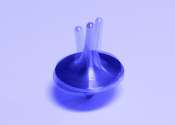Chinese fusion tool pushes past 100 million degrees
The Experimental Advanced Superconducting Tokamak (EAST), nicknamed the "Chinese artificial sun," achieved an electron temperature of over 100 million degrees in its core plasma during a four-month experiment this year. That's ...









